Commemorative Coin: Republic of Portugal - 1513 Portuguese Arrival in China
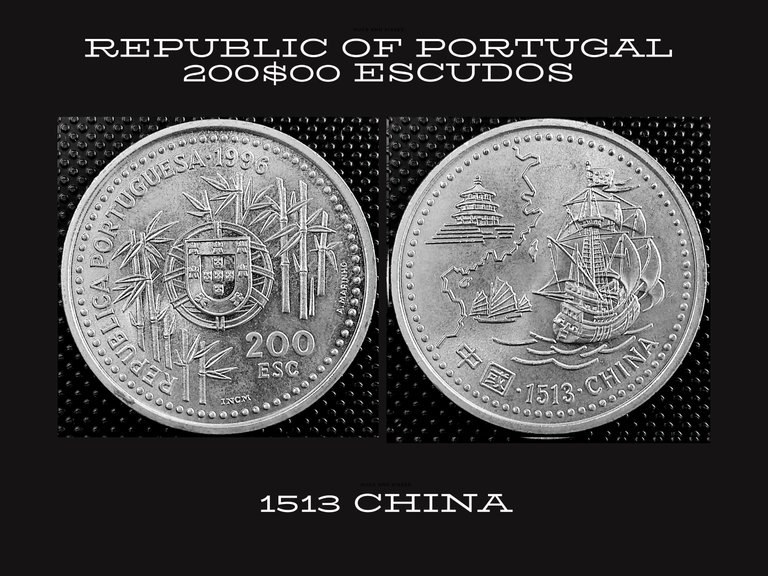
The 200 Escudos coin minted in 1996 commemorates the 1513 Portuguese Arrival in China, a pivotal event in the history of maritime exploration and cultural exchange.
Crafted from copper-nickel, an alloy consisting of approximately 75% copper and 25% nickel, the coin offers durability and resistance to corrosion, ensuring its longevity as a treasured collectible.
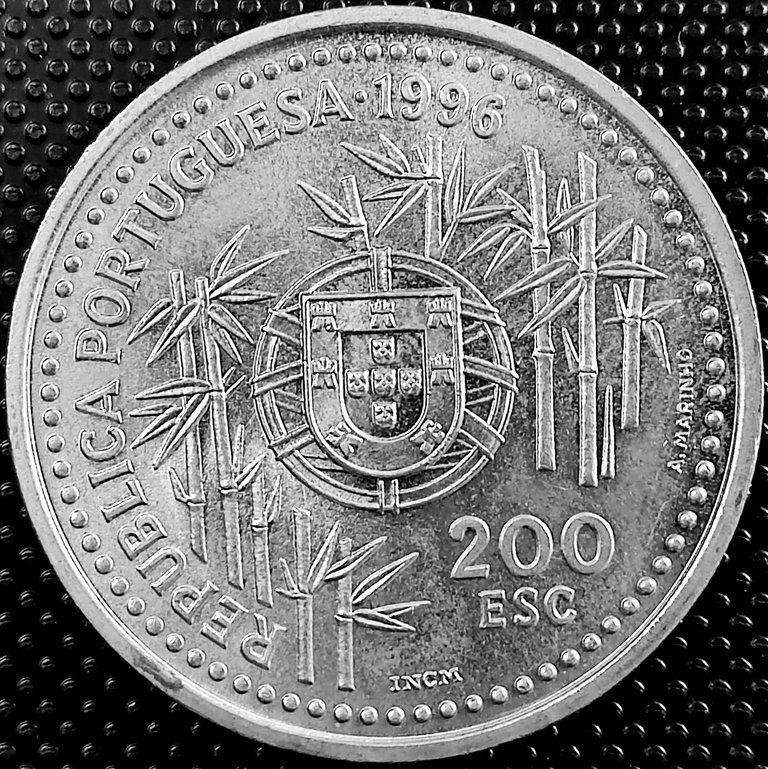
At the heart of the design lies the emblem of Portugal, intricately placed atop an armillary sphere, encircled by bamboo motifs. The name of the country: Portugal, accompanied by the date and denomination, elegantly encircles this central motif, set within a ring of pearls.
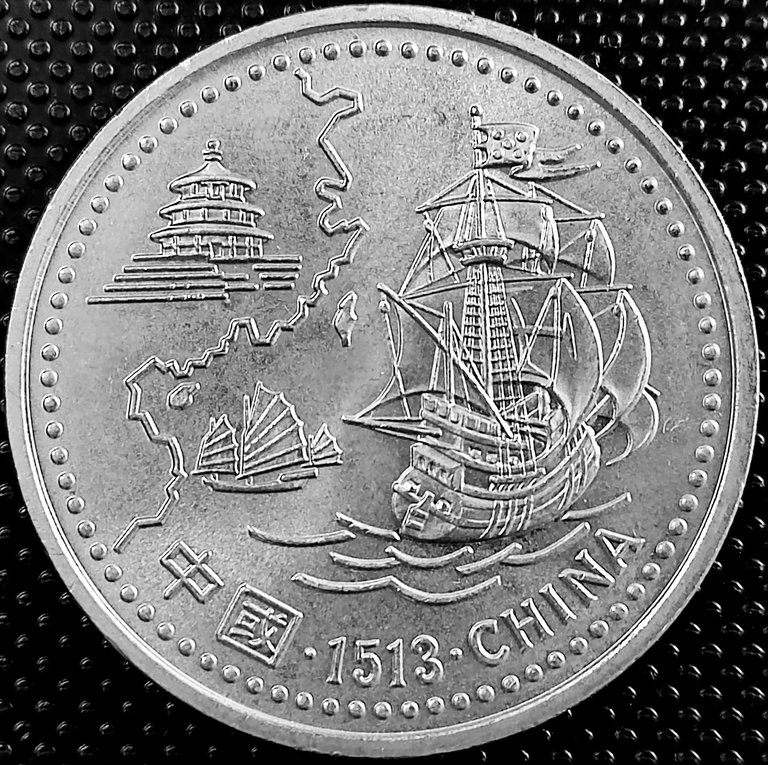
On the left side, a depiction of the coastline of China alongside the iconic Temple of Heaven in Beijing. Adjacent to this, a Portuguese vessel gracefully glides under sail, juxtaposed with a traditional Chinese junk navigating the waters.
Minted in limited quantity to commemorate the 1513 Portuguese Arrival in China, the coin is highly sought after by collectors. Each coin is uniquely numbered, enhancing its rarity and collectability.
Condition: The 200 Escudos coin is typically found in uncirculated or proof condition, boasting flawless surfaces and sharp details that accentuate its historical significance.
| SPECIFICATIONS | |
|---|---|
| PERIOD | Portuguese Republic (1986 - 2001) |
| YEAR | 1996 |
| COMPOSITION | Copper-Nickel |
| EDGE | Reeded |
| WEIGHT(g) | 21.1 |
| DIAMETER | 36mm |
| THICKNESS(mm) | 2.8 |
The 200 Escudos coin commemorating the 1513 Portuguese Arrival in China serves as a tangible reminder of Portugal historic connections to the Far East and its role in fostering cultural exchange and diplomatic relations. Its exquisite craftsmanship, symbolic design, and limited mintage make it a prized addition to any numismatic collection, honoring the spirit of exploration and discovery that defined the Age of Exploration.
HISTORY
In 1513, Portuguese explorers made a significant arrival in China, marking a pivotal moment in the history of global exploration and trade. Led by Jorge Álvares, this expedition sought to establish direct contact between Portugal and the powerful Ming Dynasty.
The Portuguese had long been driven by a desire to find new trade routes to Asia, circumventing the monopolies of Arab and Venetian merchants. Their arrival in China was part of this broader ambition, fueled by the promise of lucrative opportunities in the fabled lands of the East.
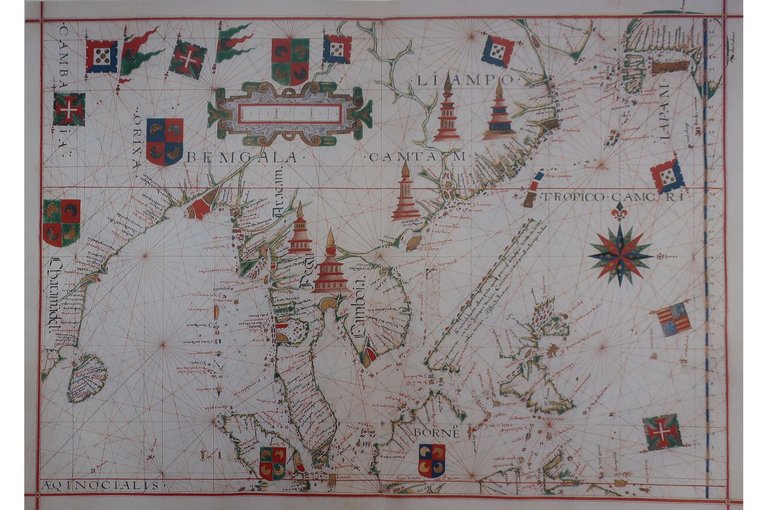
SOURCE
Upon reaching the shores of southern China, Álvares and his crew encountered the bustling port city of Guangzhou, a vibrant hub of maritime commerce. Despite initial apprehensions and linguistic barriers, they managed to establish cordial relations with local officials and merchants.
The Portuguese were intrigued by the riches of Chinese goods, including silk, porcelain, and spices, which held immense value in European markets. Recognizing the potential for trade, they sought to forge alliances and secure trading privileges with the Ming authorities.
In the years following their arrival, Portuguese merchants gradually expanded their presence along the Chinese coast, establishing trading posts and settlements. They navigated the complex dynamics of Chinese politics and diplomacy, often forming alliances with local rulers to secure their commercial interests.
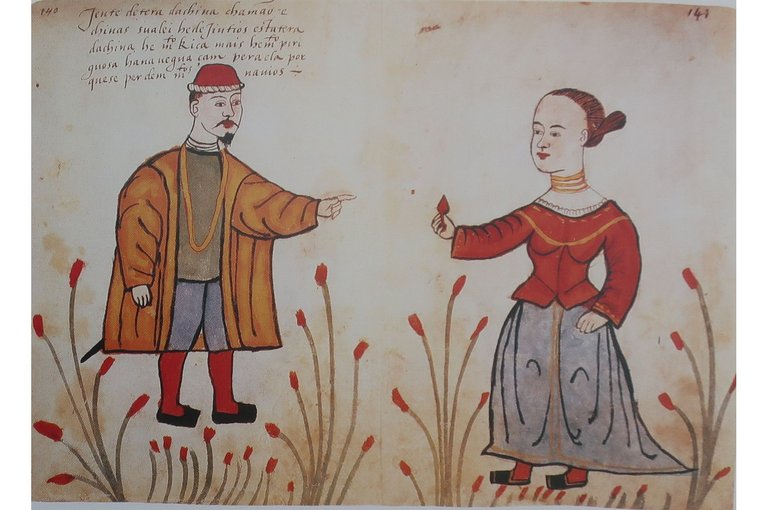
SOURCE
One of the most notable achievements of the Portuguese in China was the establishment of Macau as a trading enclave in 1557. This strategic outpost, granted to the Portuguese by the Ming Dynasty, became a vital center for East-West trade, serving as a gateway to China for European merchants.
However, Portuguese-Chinese relations were not without tensions and conflicts. Competition with other European powers, such as the Dutch and the Spanish, intensified, leading to occasional clashes and disputes over trade routes and territories.
Despite these challenges, the Portuguese arrival in China had far-reaching consequences, facilitating cultural exchange, technological diffusion, and economic integration between East and West. It laid the foundation for centuries of maritime trade and diplomatic relations between China and Europe, shaping the course of world history.

SOURCE
In this post all photos and text are authored by @portugalcoin!
➡️ Twitter
➡️ Brave Internet Browser
Images © 2024 @portugalcoin | All Rights Reserved

Welcome to my blog on Hive! Here, you'll discover various trips I've taken in Portugal, along with information about the main monuments, squares, streets, palaces, and more.
I'm also an avid collector of Portuguese coins, so feel free to exchange thoughts or information about numismatics with me. 🇵🇹🙏!
[Hive original]
Very nice only wish it was sterling!BBH
@portugalcoin! Your Content Is Awesome so I just sent 1 $BBH (Bitcoin Backed Hive) to your account on behalf of @bitcoinman. (6/50)